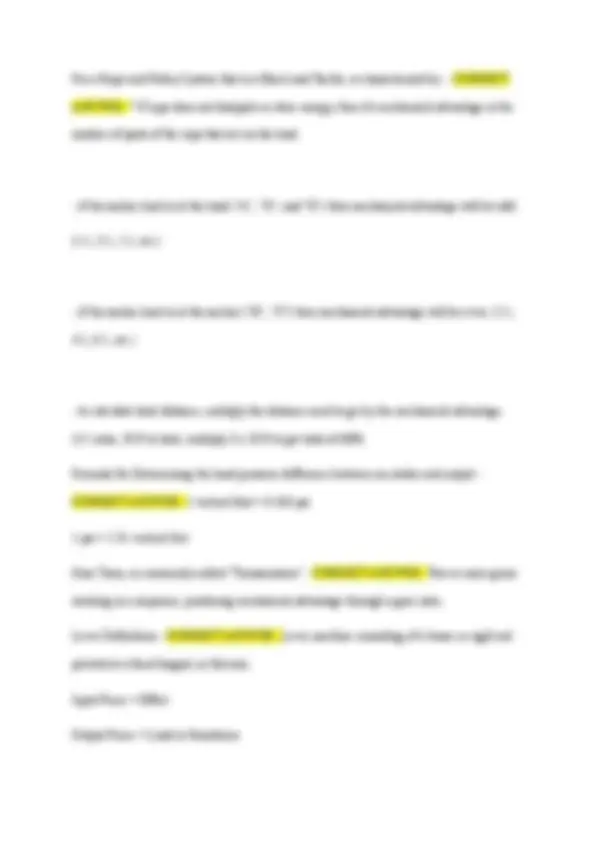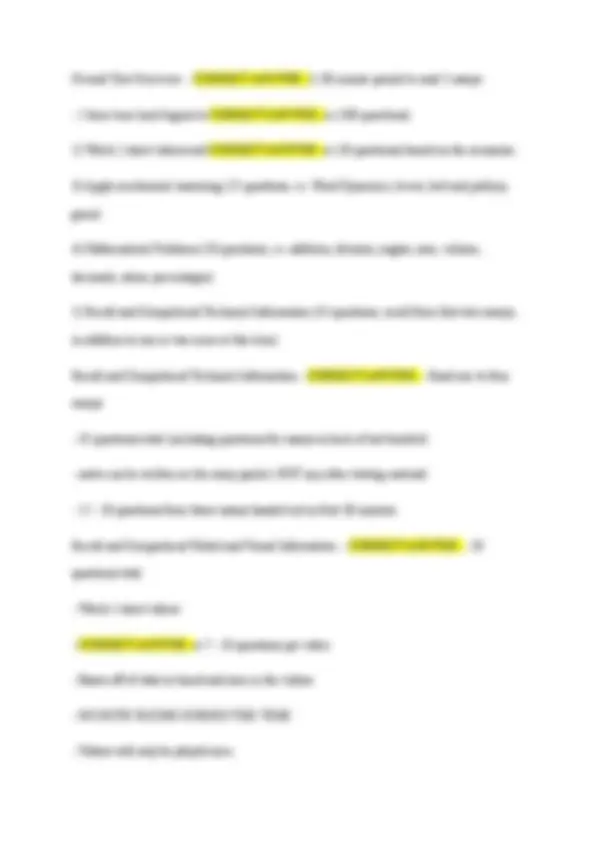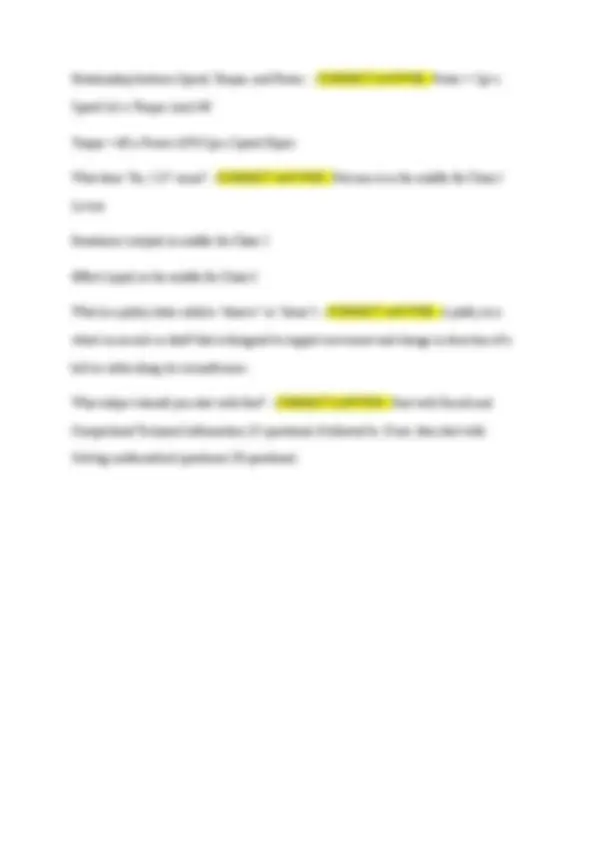





Study with the several resources on Docsity

Earn points by helping other students or get them with a premium plan


Prepare for your exams
Study with the several resources on Docsity

Earn points to download
Earn points by helping other students or get them with a premium plan
Community
Ask the community for help and clear up your study doubts
Discover the best universities in your country according to Docsity users
Free resources
Download our free guides on studying techniques, anxiety management strategies, and thesis advice from Docsity tutors
FCTC Written Study Guide Questions and Detailed Answers 2025
Typology: Exercises
1 / 5

This page cannot be seen from the preview
Don't miss anything!




Be mindful of questions with absolutes. What are some absolutes and why watch out for them? - CORRECT ANSWER Examples of absolutes are "absolutely, always, forever, completely, infinite, never, only, sole, undeniable, or wholly". Absolutes or any sort of broad statements should be suspected as wrong. Belt and Pulley Systems - CORRECT ANSWER Two or more pulleys in common to a belt. If the pulleys are of differing pitch diameters, a mechanical advantage is realized. Doesn't depend on ratio of teeth as with gears and sprockets, only pitch diameter. Class 1 Levers - CORRECT ANSWER Fulcrum is in the middle, with the effort (input) force on one side of the fulcrum and resistance (output) on the other side. Mechanical Advantage greater or less than 1 Ex: Seesaw, Crowbar, Pair of Scissors. Class 2 Levers - CORRECT ANSWER Resistance is in the middle, the effort is applied on one side of the resistance and the fulcrum on the other side. Mechanical Advantage always greater than 1 Ex: Wheelbarrow, nutcracker, bottle opener, or the brake pedal of a car. Class 3 Levers - CORRECT ANSWER Effort in the middle, the resistance is on one side of the effort and the fulcrum is located on the other side. Mechanical Advantage always less than 1 Ex: Pair of tweezers, human mandible Classes of Levers - CORRECT ANSWER Class 1, Class 2, Class 3
Overall Test Overview: - CORRECT ANSWER 1) 30 minute period to read 2 essays
Relationship between Speed, Torque, and Power: - CORRECT ANSWER Power = 2pi x Speed (w) x Torque (nm)/ 60 Torque = 60 x Power (kW)/2pi x Speed (Rpm) What does "fre, 123" mean? - CORRECT ANSWER Fulcrum is in the middle for Class 1 Levers Resistance (output) in middle for Class 2 Effort (input) in the middle for Class 3 What is a pulley (also called a "sheave" or "drum") - CORRECT ANSWER A pulley is a wheel on an axle or shaft that is designed to support movement and change in direction of a belt or cable along its circumference. What subject should you start with first? - CORRECT ANSWER Start with Recall and Comprehend Technical Information (35 questions) if allowed to. If not, then start with Solving mathematical questions (20 questions).